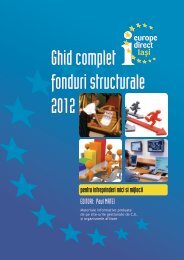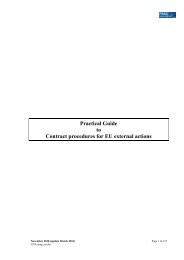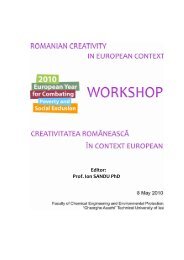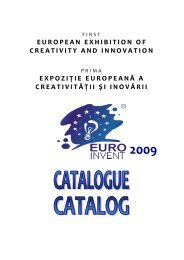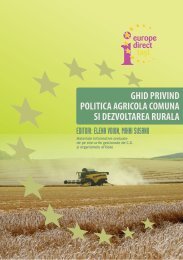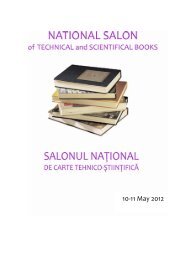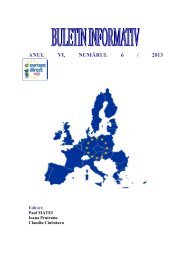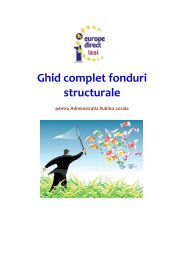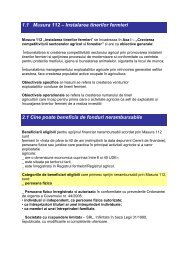2012 - Europe Direct Iasi
2012 - Europe Direct Iasi
2012 - Europe Direct Iasi
You also want an ePaper? Increase the reach of your titles
YUMPU automatically turns print PDFs into web optimized ePapers that Google loves.
EUROINVENT <strong>2012</strong><br />
samples obtained were analyzed with a scanning electron<br />
microscope (SEM). The diameters of the fibers were measured in<br />
order to determine the optimum electrospinning parameters.<br />
X. 13.<br />
Title<br />
Achieving Biomimetic Structural Color for Textiles – „Dyeing<br />
without colorants”<br />
Authors Mirela Teodorescu<br />
Institution „Gheorghe Asachi” Technical University of <strong>Iasi</strong><br />
Description<br />
For thousands of years colors of textiles and clothes have been<br />
obtained from pigments. Until some decades ago, people did not<br />
realize that Nature also „dresses” herself into amazing structural<br />
colours. Most of these colours are based on simple optical<br />
phenomena: thin film interference, multilayer reflectors,<br />
diffraction gratings, photonic crystals, light scattering.<br />
Although structural colours have been reported in a diverse range<br />
of species, including birds, fish, molluscs, annelids and<br />
arthropods, however, butterflies displays among the most diverse<br />
reflecting surfaces, probably because they have scales<br />
supporting, even at submicron level, very complex architectures.<br />
The bright colours and reflective properties of butterfly wings<br />
can offer great innovations for textiles and clothes. The tropical<br />
Morpho butterfly displays a brilliant blue due to multilayer<br />
interference from vary small structures on wing scales. Light<br />
interacts with these structures leading to a high intensity<br />
reflection spectrum which varies strongly with the angle of<br />
incidence and the angle of observation.<br />
The study focuses on understanding the physical phenomena<br />
behind the structural colour and the development of theoretical<br />
and practical models that imitates butterfly’s scale<br />
nanoarchitectures. The industrial potential of these structures for<br />
use in textile applications is demonstrated by varying different<br />
parameters, leading to a wide colour palette.<br />
The novel range of nanomaterials with biomimetic structural<br />
colour can offer an eco footprint for textile industry, replacing<br />
the photodegradable and toxic dyes.<br />
Innovative Researches<br />
172



